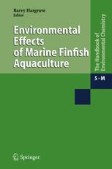Search
Search Results
-
Hormone-Mediated Intercellular Calcium Signalling in an Insect Salivary Gland – Pathways and Mechanisms
The salivary glands of the blowfly Calliphora vicina are a favourable preparation for investigations into spatio-temporal Ca 2+ dynamics in an intact...
-
From Simple to Complex Ca 2+ Oscillations: Regulatory Mechanisms and Theoretical Models
Intracellular Ca 2+ oscillations most often appear as regular spikes. However, complex Ca 2+ oscillations in the form of bursting or chaos have also...
-
11 Plant sphingolipids
Plants contain a multiplicity of sphingolipid metabolites, such as long-chain bases, long-chain base phosphates, ceramides, glycosylceramides,...
-
5 Sterol metabolism and functions in higher plants
Higher plants synthesize a bewildering array of sterols, with sitosterol, stigmasterol, and 24-methylcholesterol as major compounds. All plant...
-
6 Sterol biochemistry and regulation in the yeast Saccharomyces cerevisiae
Saccharomyces cerevisiae has been a major model system for the study of sterol biosynthesis and function. All of the genes encoding the enzymes...
-
7 Mammalian ACAT and DGAT2 gene families
Mammalian isozymes of ACAT, DGAT, and MGAT are encoded by the ACAT and DGAT2 gene families. These enzymes catalyze the synthesis of neutral lipid...
-
Cholera toxin: mechanisms of entry into host cells
Cholera toxin moves from the plasma membrane to the ER of host cells to cause disease. Trafficking in this pathway depends on toxin binding to...
-
Thio-, Seleno-, Telluro-Amides
Recent developments regarding synthetic methods of producing chalogen isologues of amides are reviewed. Among exhaustive studies on the syntheses,...
-
The Ustilago maydis killer toxins
Killer toxins are small proteins secreted by a number of fungi that are lethal to susceptible cells (generally fungi of the same or related species)....
-
The Construction and Operation of Anion Sensors: Current Status and Future Perspectives
This chapter is intended to provide an insight into the construction and operation of anion sensing devices, rather than the chemistry of anion...
-
Regioselective Polymerization of 1-Alkynes and Stereoselective Cyclopolymerization of α,ω-Heptadiynes
Metathesis-based polymerizations of 1-alkynes and cyclopolymerizations of 1,6-heptadiynes using late transition metal catalysts are reviewed. Results...
-
Deconvolution Microscopy
Since its introduction in 1983, deconvolution microscopy has become a key image-processing tool for visualizing the cellular structures of fixed and...
-
Collagen Suprastructures
Collagens are a family of proteins with considerable molecular diversity. The genetic diversity is increased by assembly of multiple isoforms,...
-
Collagen Cross-Links
Collagen is the main source of extracellular support for multicellular animals. The mechanical strength of collagen fibrils depends on a highly...
-
Biosynthesis and function of 1-methyladenosine in transfer RNA
Determining the function of single nucleotide modifications in tRNA has been elusive because so many tRNA modification enzymes are not essential for...
-
Transfer RNA modifications and modifying enzymes in Saccharomyces cerevisiae
Transfer RNAs are adaptor molecules, which decode mRNA into protein and, thereby, play a central role in gene expression. During the maturation of a...
-
Phosphinidenes
Of the low-valent organophosphorus compounds phosphinidenes occupy a special place. In ‘free’ phosphinidenes the phosphorus atom carries a single...
-
Laser Application of Polymers
Laser ablation of polymers has been studied with designed materials to evaluate the mechanism of ablation and the role of photochemically active...
-
Assessing Nitrogen Carrying Capacity for Blue Hill Bay, Maine: A Management Case History
As net-pen aquaculture in coastal waters grows, regulatory agencies must consider the potential for localized eutrophication. To avoid excessive...
-
On the Prebiotic Synthesis of Nucleobases, Nucleotides, Oligonucleotides, Pre-RNA and Pre-DNA Molecules
All the strategies for the prebiotic syntheses of RNA and DNA assume the adequate availability of the presumptive precursors such as purine and...
